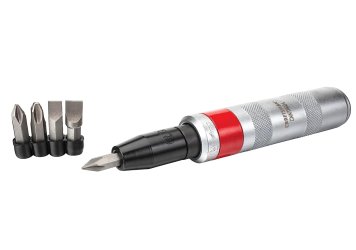I managed to strip all four of them and need to replace them. The manual states they are 8/32 t20 torx. Does anyone know what length?

testtest
You are using an out of date browser. It may not display this or other websites correctly.
You should upgrade or use an alternative browser.
You should upgrade or use an alternative browser.
Springfield Saint Victor Handguard Screws
- Thread starter arrrgh14
- Start date
I stripped all 4 of mine over a year.I managed to strip all four of them and need to replace them. The manual states they are 8/32 t20 torx. Does anyone know what length?
View attachment 25950
I took a dremel tool and drilled a cross slat so I could just use a flat head screwdriver on them.
2 I stripped and couldn't remove from hand guard and had to drill them to remove
Keystone19250
SAINT
The last time I shot my AR Edge pistol I found the hand guard screws had loosened up with one falling out, I found it on the shooting table, I replaced them with a drop of blue lock tight.
Get a good set of hardened Torx drivers as it’s the tool that starts to become worn first that ruins the screws by not fitting tight.
Get a good set of hardened Torx drivers as it’s the tool that starts to become worn first that ruins the screws by not fitting tight.
Cust Svc will send you 4 at no charge. Request the plates as well and update both.
Customer service can also confirm the length of you want to get them local.
Bassbob
Emissary
Man, I wouldn't use an impact driver on an aluminum handguard. Get a hardened steel torx driver ( not a bit in a universal driver, an actual set of torx drivers) and use the right size. If it's really stubborn you can (gently) heat the screw up by either putting the tip of a hot soldering iron on the screw head or using a heat gun.Would using one of these hand impact drivers (gently) with the appropriate sized Torx bit and a vise help break any stubborn blue Loctite…
View attachment 38117
Area52
Professional
Man, I wouldn't use an impact driver on an aluminum handguard. Get a hardened steel torx driver ( not a bit in a universal driver, an actual set of torx drivers) and use the right size. If it's really stubborn you can (gently) heat the screw up by either putting the tip of a hot soldering iron on the screw head or using a heat gun.
I agree, soft metals need special attention!
The right tool for the job. Seen often are remodelers using impact drivers on just about everything regardless of fragility of the two components like driving drywall screws or general lightweight screwing when a drill would be more appropriate.
Another condsideration is the hand tool itself, being the proper size and the angle of pressure used to fasten or remove. T-Handle style Torx driver used at a perfect 90° angle seems so obvious to accomplish but often theose hand bit-drivers (screwdriver type) tend to lean off that 90° pitch.
Like with allen hex type fasteners, it’s often mistaken that there are metric sizes too that cause stripping. Even Torx can be misidentified with a XZN triple square fastener.
I learned the hard way - not being able to read the imprint on my allen set I was using. Thought it was SAE but was Metric. Good lighting and magnifiers are a big help.
Okay, for anyone that does not know, they are definitely TORX PLUS screws. The size is IP-20. Do not use a standard Torx (T-20) bit. BTW, SA did not use Loctite -- blue, or otherwise -- on the screws. Hope this helps.
(I removed mine to swap the ejection port cover out for a custom one. No problem at all removing, and re-installing the screws.)
(I removed mine to swap the ejection port cover out for a custom one. No problem at all removing, and re-installing the screws.)
Attachments
Last edited:


